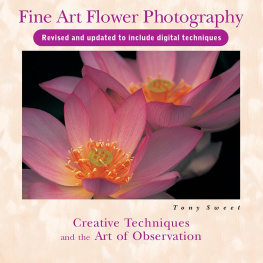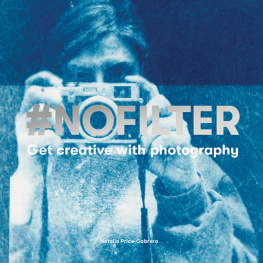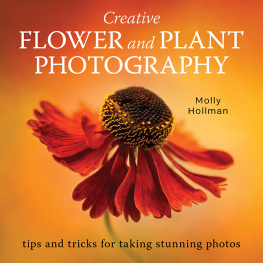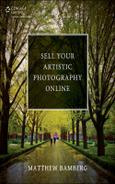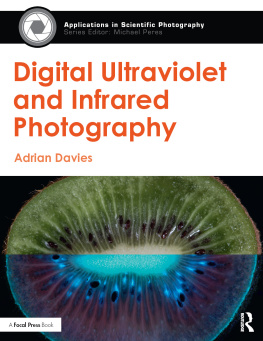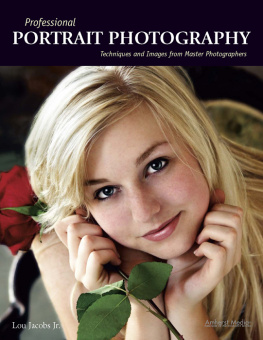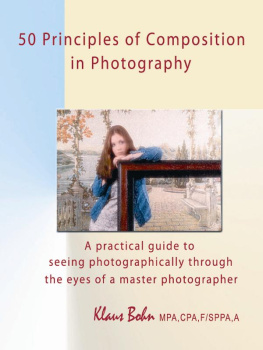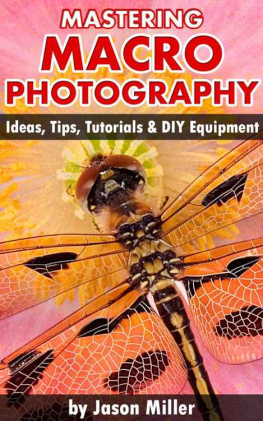Sweet - Fine art flower photography: creative techniques and the art of observation
Here you can read online Sweet - Fine art flower photography: creative techniques and the art of observation full text of the book (entire story) in english for free. Download pdf and epub, get meaning, cover and reviews about this ebook. City: Mechanicsburg;PA, year: 2012, publisher: Stackpole Books, genre: Romance novel. Description of the work, (preface) as well as reviews are available. Best literature library LitArk.com created for fans of good reading and offers a wide selection of genres:
Romance novel
Science fiction
Adventure
Detective
Science
History
Home and family
Prose
Art
Politics
Computer
Non-fiction
Religion
Business
Children
Humor
Choose a favorite category and find really read worthwhile books. Enjoy immersion in the world of imagination, feel the emotions of the characters or learn something new for yourself, make an fascinating discovery.
- Book:Fine art flower photography: creative techniques and the art of observation
- Author:
- Publisher:Stackpole Books
- Genre:
- Year:2012
- City:Mechanicsburg;PA
- Rating:4 / 5
- Favourites:Add to favourites
- Your mark:
- 80
- 1
- 2
- 3
- 4
- 5
Fine art flower photography: creative techniques and the art of observation: summary, description and annotation
We offer to read an annotation, description, summary or preface (depends on what the author of the book "Fine art flower photography: creative techniques and the art of observation" wrote himself). If you haven't found the necessary information about the book — write in the comments, we will try to find it.
Fine art flower photography: creative techniques and the art of observation — read online for free the complete book (whole text) full work
Below is the text of the book, divided by pages. System saving the place of the last page read, allows you to conveniently read the book "Fine art flower photography: creative techniques and the art of observation" online for free, without having to search again every time where you left off. Put a bookmark, and you can go to the page where you finished reading at any time.
Font size:
Interval:
Bookmark:

Flower
Photography
and the Art of Observation
STACKPOLE
BOOKS
For Susan
LOREN EISLEY, IN HIS CLASSIC BOOK THE IMMENSE JOURNEY, WROTE ABOUT THE evolution of flowers: Flowers changed the face of the planet. Without them, the world we knoweven man himselfwould never have existed. Eisley was a scientist with the insight of a sensitive literary artist. His skill with words matched the intricate and diverse beauty of flowers, which has universally influenced humankind, including visual artists in all mediums. History clearly chronicles flowers in paintings, architectural inlays, frescoes, and cultural artifacts from around the world. Color photography may be a latecomer to the world of art, but its practitioners have embraced flowers as compositional favorites.
Tony Sweets portfol io is a testament to the intrinsic, mystical qualities of flowering plants. Each visual interpretation draws you in like a bee to nectar. These seductive, abstract, and impressionistic images, imbued with color, deserve your quiet contemplation before you absorb the technical information. Tonys free-spirited and unrestrained approach to photography allows him to dissolve boundaries of traditionalisma carryover, Im convinced, from his experiences as an improvisational jazz musician.
This book is a garden feast. Each page blooms with the refreshing fragrance of creativity. Enjoy your visit!
Pat OHara
THE BEAUTY AND INFINITE PATTERNS OF FLOWERS MAKE THEM A WONDERFUL subject for photographic interpretations. Flowers are among the first subjects that all new photographers seek. When I first got into photography, the first thing I did was head to the local nature center to find some flowers to photograph. Other photographers with whom Ive spoken had the same initial response. Flowers are colorful, they dont move (except for an occasional breeze) and they dont mind being photographed. They are therefore an excellent way to learn about and experiment with lenses and filters, exposure, composition, and special photographic techniques and effects.
In my years as a photography instructor, Ive noticed there is a discernable pattern and process when people begin photographing flowers. Initially, the flower is fully shown in harsh light against a busy background, with the flower dead-center or bulls-eye in the frame. These are problems that are easy to remedy. Once students see examples of more advanced compositional techniques and learn how to control light, they immediately start thinking outside of their comfort zone and begin the process of creating more technically sound images with more creative expression. In other words, they begin to develop a personal style.
Many of the flowers in this book are unnamed. There are two schools of thought as to naming subjects. The first is to record the subject accurately with regard to name, genus, species, etc., which is necessary for stock images and editorial work. The second is to approach the subject with an open mind and view it as a series of lines, shapes, angles, and texturesto photograph the subject from a more emotional perspective. The latter is how I approach all subject material. It enables me to continually view familar subjects in new and different ways.
The images in this book are designed to illustrate different ways of seeing an all-too-familiar subject along with some advanced compositional techniques. It is my hope that this book will open up your creativity and lead to a more personal and unique approach to the wonderful and endless world of flower photography.
Tony Sweet
The camera always points both ways. In expressing your subject, you also express yourself.
Freeman Patterson
Patterson Park, Baltimore, Maryland
Digital: White BalanceCloudy or 6500K (+/)
Film: Glass filter81B warming filter
It is not common practice to photograph flowers when its windy. Normally, we want these pictures sharp, which requires small apertures, and therefore longer shutter speeds, for the greatest depth of field. That is certainly one way to do it. Another way is to use the wind to create a softer, more impressionistic look. With gently blowing flowers, consider using the smallest aperture for the longest possible exposure in order to record movement rather than sharpness. Depending on the movement, between one-quarter and two seconds of exposure is an average time for this effect.

Brookside Gardens, Wheaton, Maryland
Digital: White BalanceSunny or 6500K (+/)
Film: Glass filterTiffen 812 filter to enhance red
I always look for sheet websspiderwebs on the groundwith colorful subjects under them. The resulting effect is a textured one, not unlike photographing through a screen or other translucent, textured overlay. The yellow centers were all cropped out except for the two placed in the middle of the frame, and the camera was turned slightly to juxtapose them diagonally. Compo sitionally, the red petals act as a secondary frame, or a frame within a frame, drawing attention further into the yellow centers.
The Tiffen 8l2 is a mild red intensifying filter that slightly pumps up the red, leaving other tonalities largely unaffected. This is a good choice for film images. However, since red is a very sensitive spectrum in digital photography, color filter enhancements can adversely affect red, resulting in detail-less puddles of color. A small saturation increase, on occasion, is all thats needed to pop reds.

Shampers Bluff, New Brunswick, Canada
Digital: White BalanceCloudy or 6500K (+/)
Film: Glass filter81B warming filter
Shooting close-ups wide open with selective focus is an easy way to achieve moody flower images. Here, I used the wide-open aperture and focused on the lupin in front of the dewdrop to create the large, out-of-focus orb in the background, which resembles a sun low on the horizon. The coloration of the dewdrop comes from the reflected color of the dusk sky. Bright, out-of-focus highlights take on the shape of the lens diaphragm (in this case, wide open), which produced the roundness of the dewdrop. If shot at f/l6, the dewdrop would take on the shape of that lens diaphragm, appearing hexagonal.
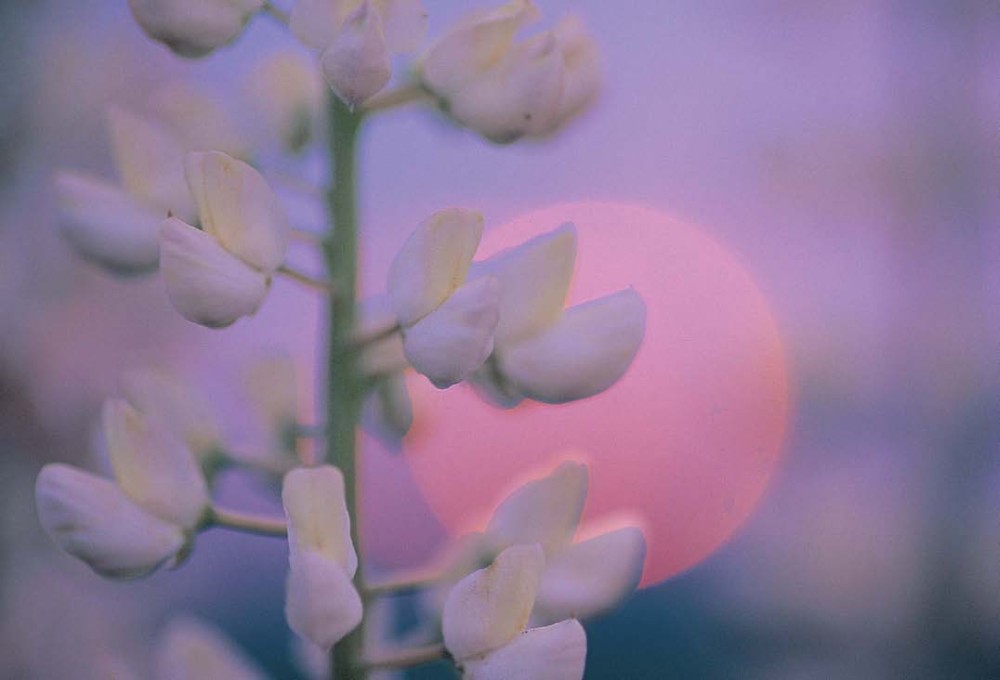
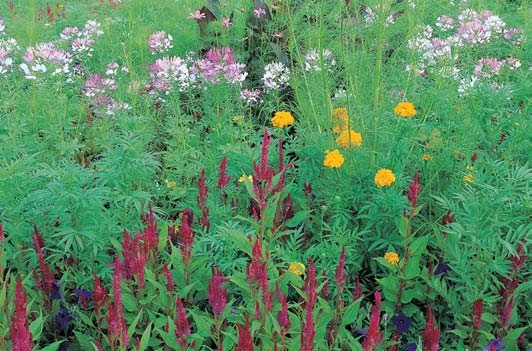
Sherwood Gardens, Baltimore, Maryland
Digital: White BalanceCloudy or 6500K (+/)
Film: Glass filter81B warming filter
The juxtaposition of these two images illustrates the multiple exposure effect. The many colors in this small patch of flowers were the attraction and made great grist for the multiple exposure technique. I made eight exposures while moving the camera upward in very small increments between each shot, keeping the movement in as straight a line as possible; this created the colored pencil look. Shooting at f/8 rather than f/l6 gives a less sharp, more impressionistic appearance. Notice how there is visual activity throughout the picture and how the red creates a frame and visual weight at the bottom of the image. When using creative techniques, it is important to pick an appropriate subject, which is determined in part through experience.
Next pageFont size:
Interval:
Bookmark:
Similar books «Fine art flower photography: creative techniques and the art of observation»
Look at similar books to Fine art flower photography: creative techniques and the art of observation. We have selected literature similar in name and meaning in the hope of providing readers with more options to find new, interesting, not yet read works.
Discussion, reviews of the book Fine art flower photography: creative techniques and the art of observation and just readers' own opinions. Leave your comments, write what you think about the work, its meaning or the main characters. Specify what exactly you liked and what you didn't like, and why you think so.

